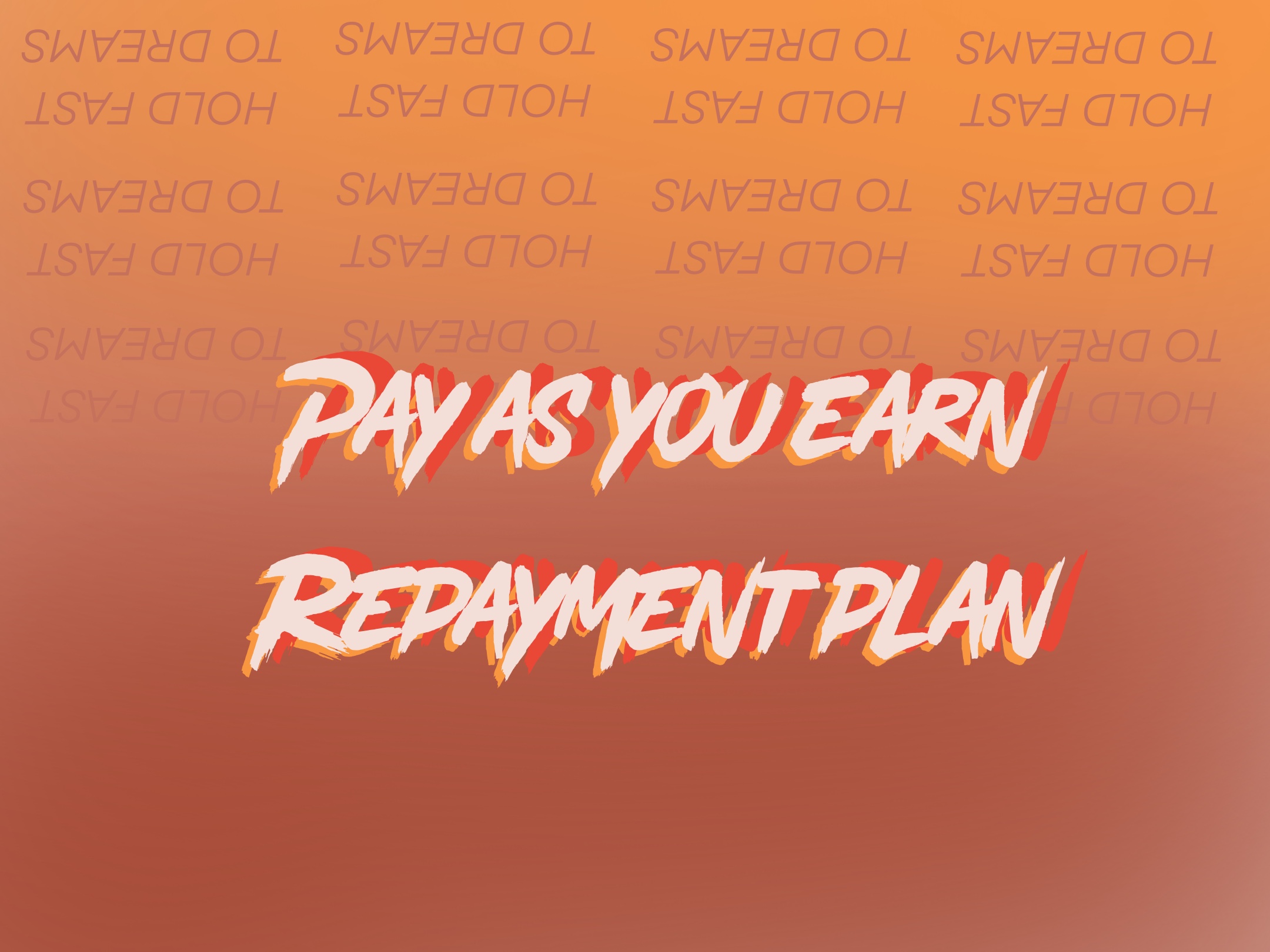The Pay As You Earn Repayment Plan helps keep your monthly student loan payments affordable, and usually has the lowest monthly payment amount of the repayment plans that are based on your income. If you need to make lower monthly payments, this plan may be for you.
As of Dec. 21, 2012, the Pay As You Earn plan is available for eligible borrowers.
To qualify for Pay As You Earn, you must have a partial financial hardship. You have a partial financial hardship if the monthly amount you would be required to pay on your eligible federal student loans under a 10-year Standard Repayment Plan is higher than the monthly amount you would be required to repay under Pay As You Earn. For this purpose, your eligible student loans include all of your William D. Ford Federal Direct Loan (Direct Loan) Program loans that are eligible for Pay As You Earn, as well as certain types of Federal Family Education Loan (FFEL) Program loans. Although your FFEL Program loans cannot be repaid under Pay As You Earn, the following types of FFEL Program loans are counted in determining whether you have a partial financial hardship:
- Subsidized and Unsubsidized Federal Stafford Loans
- Federal PLUS Loans made to graduate or professional students
- Federal Consolidation Loans that did not repay any PLUS loans for parents
You also must be a new borrower as of Oct. 1, 2007, and must have received a disbursement of a Direct Loan on or after Oct. 1, 2011. You are a new borrower if you had no outstanding balance on a Direct Loan or FFEL Program loan as of Oct. 1, 2007, or had no outstanding balance on a Direct Loan or FFEL Program loan when you received a new loan on or after Oct. 1, 2007.
Your payment amount may increase or decrease each year based on your income and family size. Once you’ve initially qualified for Pay As You Earn, you may continue to make payments under the plan even if you no longer have a partial financial hardship. Find out whether you’re eligible for Pay As You Earn.
Eligible Direct Loans
The following Direct Loans are eligible for Pay As You Earn:
- Direct Subsidized Loans
- Direct Unsubsidized Loans
- Direct PLUS Loans made to graduate or professional students
- Direct Consolidation Loans without underlying PLUS loans made to parents
Loans That Are Not Eligible
The following loans are not eligible for repayment under Pay As You Earn:
- Direct PLUS Loans made to parents
- Direct Consolidation Loans that repaid PLUS loans (Direct or FFEL) made to parents
- FFEL Program loans
- Private education loans
Monthly Payments
Under this plan, your monthly payments are
- based on your income and family size;
- adjusted each year, based on changes to your annual income and family size;
- usually lower than they are under other plans;
- never more than the 10-year standard repayment amount; and
- made over a period of 20 years.
Advantages of Pay As You Earn
- Pay based on what you earn—Under Pay As You Earn, your monthly payment amount will be 10 percent of your discretionary income, will never be more than the amount you would be required to pay under the 10-year Standard Repayment Plan, and may be less than under other repayment plans.
- Interest payment benefit—If your monthly Pay As You Earn payment amount doesn’t cover the interest that accrues (accumulates) on your loans each month, the government will pay your unpaid accrued interest on your Direct Subsidized Loans (and on the subsidized portion of your Direct Consolidation Loans) for up to three consecutive years from the date you began repaying your loan under Pay As You Earn.
- Limitation on the capitalization of interest—While you have a partial financial hardship, interest that accrues but is not covered by your loan payments will not be capitalized, even if interest accrues during a deferment or forbearance. Unpaid interest capitalizes if you are determined to no longer have a partial financial hardship, but the total amount of interest that capitalizes while you are repaying your loans under the Pay As You Earn plan is limited to 10% of your original principal balance when you begin paying under Pay As You Earn.
- 20-year forgiveness—If you repay under Pay As You Earn and meet certain other requirements, any remaining balance will be forgiven after 20 years of qualifying repayment.
- 10-year public service loan forgiveness—If, while you are employed full-time for a public service organization, you make 120 on-time, full monthly payments under Pay As You Earn (or certain other repayment plans), you may be eligible to receive forgiveness of the remaining balance of your Direct Loans through the Public Service Loan Forgiveness Program.
Disadvantages of Pay As You Earn
- You may pay more interest—A reduced monthly payment under Pay As You Earn generally means you’ll be repaying your loan for a longer period of time, so you may pay more total interest over the life of the loan than you would under other repayment plans.
- You must submit annual documentation—To set your payment amount each year, your loan servicer, the organization that handles billing and other services for your loan, needs updated information about your income and family size. You must provide the documentation or your monthly payment amount will be changed to the amount you would be required to pay under the 10-year Standard Repayment Plan, based on the amount you owed when you began repaying under Pay As You Earn, and will no longer be based on your income. This amount will be higher than your prior payment under Pay As You Earn that was based on your income. If you do not provide the required income documentation, unpaid interest will also capitalize.
- Though FFEL Program loans are taken into account when determining whether you have a partial financial hardship, only Direct Loans are eligible for the Pay As You Earn repayment plan. Therefore, you will need to select another repayment plan, such as the Income-Based Repayment plan, for any FFEL Program loans that you have.
- You may have to pay taxes on any loan amount that is forgiven after 20 years.
Calculate your estimated loan payments under Pay As You Earn!
Want more detailed information about Pay As You Earn? Download the Pay As You Earn fact sheet.
Want to Apply for Pay As You Earn?
Contact your loan servicer before you apply for the Pay As You Earn plan. Your loan servicer will answer your questions about the plan and will help you to decide if the Pay As You Earn plan is the best plan for your situation.
If you are you ready to apply for Pay As You Earn, go to StudentLoans.gov, sign in, and complete the electronic Income-Based (IBR)/Pay As You Earn/Income-Contingent (ICR) Repayment Plan Request.
Need Help Repaying Your Student Loans?
If the Pay As You Earn repayment plan is not right for you, contact your loan servicer to discuss other repayment options. You may be able to change your repayment plan to one that will allow you to have a longer repayment period. Also ask your loan servicer about your options for a deferment or forbearance or loan consolidation.

